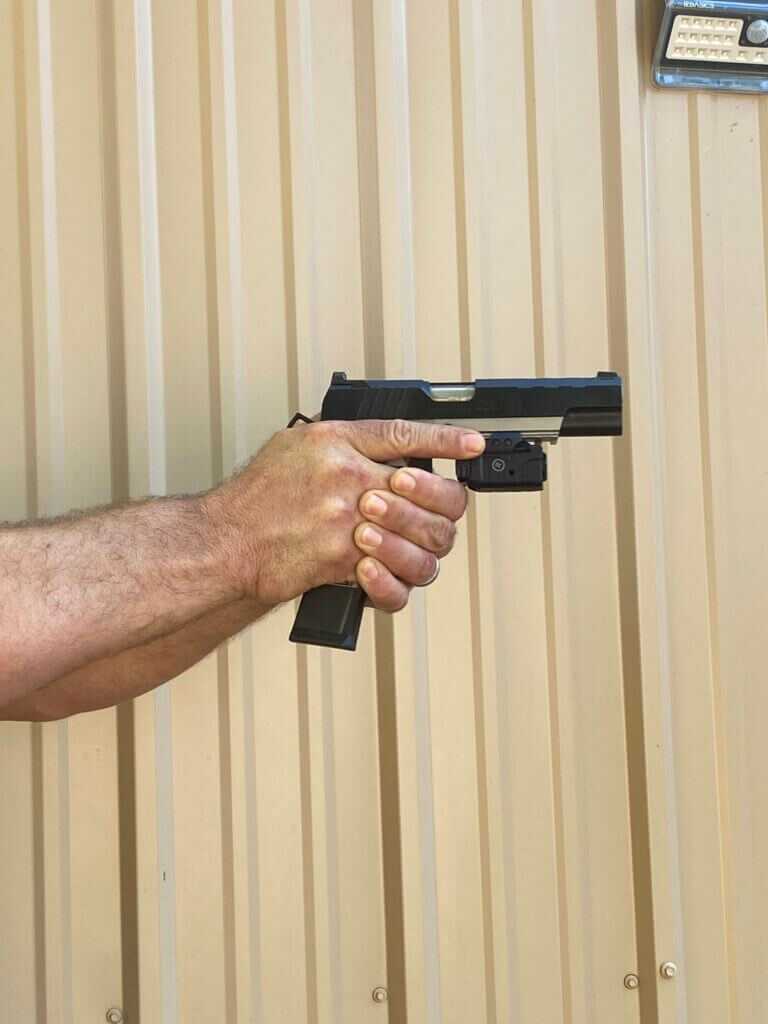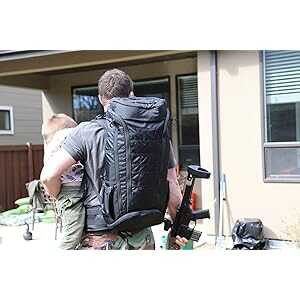Estimated reading time: 0 minutes

A good way to start a fight amongst your friends is to bring up the subject of lights and lasers for concealed carry guns. Opinions run strong on this one, and they are all over the map. Some will tell you lasers build bad habits, and you should never have one. Some will tell you lights get in the way on a CCW piece, and you shouldn’t use one anyway. And some will just tell you that if John Moses Browning intended you to have a laser and light, he would have built one back in 1910.

Despite all that, lights and lasers keep shrinking and keep coming straight for the CCW sized pistols. What looked like a D cell Maglite back in the ’80s is now smaller than your thumb, with even more capabilities. So today, I am going to give you my opinion on lights and lasers, which along with $1 will get you a cup of coffee at McDonald’s. But I’m going to anyway, with this warning. If you are a Luddite, might as well click away now. Because I love them.

Lights: The Tactical Advantage
Primarily, I love them for two reasons. And we will toss in a controversial third towards the end, so hang on for that. I feel that a modern laser/light gives you some tactical advantages that are worth exploring, especially since they have gotten so small and reliable. I am a big fan of the Crimson Trace Rail Master Pro since it does both very well with a tiny footprint. Not to mention, Crimson Trace is pretty much the King of lasers. No one has been around longer or earned a better reputation for reliability.
The first advantage has to do with physiological effects on the body when a gunfight starts. Now, this doesn’t happen to everyone, but shrinks and other 40-pound forehead people have proven it happens to some. Humans tend to look at the threat, no matter how much they have trained to look at their sights. It’s a basic instinct. You look where the threat is at because nothing in human history (until very recently) was going to solve it by looking elsewhere. One of the ways you see this manifest is the VERY high number of both police and soldiers that shoot a bad guy in the hand when they meant to hit him in the chest. It has nothing to do with trying to disable rather than kill, I know this because it happens on paper-range targets too.

Training Helps
The good news is it gets better with time and experience. If you read even Old West gunfighters like Wyatt Earp, they will say they saw their sights every time. And after your first fight, that is largely true. But the bad news is the vast majority of you in the audience haven’t been in that first firefight yet, so you still have to work through the problems associated with it. And the laser helps here. Because the laser allows you to both look at the threat instead of your sights, and still have an aiming device you can see.

Am I telling you to train not to look at your sights? Absolutely not. Hell, maybe you train enough with them this doesn’t affect you. Or you are in the percentage of people it wasn’t going to affect in the first place. But at least if you do get in that fight, and you can’t focus on the sights, the laser gives you something to work with.

Moving Targets
The second reason I like lasers, especially in not daylight bright settings, has to do with another human instinct. If you watch videos of either LE or citizens getting in shootouts, what is a common denominator? Often the moment a gun comes out, and almost always the second a round is fired, at least one party starts running around like a chicken sans head. Quite often still shooting back, and therefore still a threat.
Now you can get very good at tracking a moving target with iron sights. But it takes a lot of practice, and at that specific thing. This is a problem, because most people don’t have the money or resources to get a moving practice target. If you shoot competition, you will get enough over a few months of matches to not suck at it. But to get truly good at it, you have to have one, and they aren’t cheap.

A laser short circuits that deficiency. Because tracking a mover with a laser is very easy, and instinctive. And is once again a case where being able to follow the threat with your eyes, because you can see the laser ON THE THREAT, is a big advantage. If you can track a rabbit with a flashlight, you can track a threat with a laser, it’s that easy. And if it’s anything but direct sunlight, you can actually follow the beam the entire way to its destination.
De-Escalation
What about that third thing? Well, it’s a bit stickier. I’m not a lawyer, and no one should ever take legal advice from me. But a laser can be a de-escalation tool as well. Let’s not get crazy here, because the laser is attached to your muzzle. And in every state, I know of at least, if you point a muzzle at someone you might as well have shot them, in terms of escalation of force. Meaning that pointing a weapon at someone is assault with a deadly weapon. So a laser should never, ever be pointed at someone until they meet the criteria for justifying deadly force.
That being said, however, you have to accept another truth. Just because you CAN shoot someone doesn’t always mean you SHOULD shoot someone. And let’s call this reality advice, not moral advice. Because no matter what, no matter how clear cut a shoot seems, odds are good it is going to cost you a lot of money and 2 years of your life to sort out. There is a guy from Austin under indictment right now for shooting a “protester” that was pointing an AK 47 at him.
Yes, there is such an imminent threat that you have no choice but to start blazing. But threats can also exist that you would be justified to do so, but tactically can still give it a minute to sort out. And a green laser on the chest is a very good indicator you mean business. As in, a bad guy might just decide to quit and go home, then see if you have the stones to pull that trigger. And if it saves you just one hour of attorney fees, the laser has paid for itself. Start talking about retainers, and it’s many times over.
*** Buy and Sell on GunsAmerica! ***



Your blog gave us good knowledge to work with. Each and every tip in your post is excellent. Thank you very much for sharing.
lights and lasers are just tools to help you identify and shoot your target better. a personal choice or sighting upgrades more or less and relatively cheap compared to legal costs. what we are really talking about here is that if you choose to carry outside the home and would not hesitate to use that gun in self defense, you should prob have some kind of carry insurance before you shoot someone. heck even shooting an unarmed intruder inside your home could get you charged. so if you dont know your states laws very well you should prob get self defense insurance first. that way if you get charged for pointing or shooting, your lawyer will handle it and it will be covered after deductible. its a great idea, one that should be discussed more. with all the time and money you saved not paying those legal fees you could buy a boat load of lights and lasers and prob some more guns and insurance too. bottom line, in this system justice costs money.
The 1911 is NOT dead as far as I’m concerned. I grew up and cut my teeth on a Colt Ser70’s that I still own to this day. Back in the 90’s, I started to carry a 9mm 92fs. More rounds? Yes, but it never fit my hand and felt like my 1911. Six months ago, I purchased another 1911. The feel, the fit.. it was all there. It was like coming home.
It is difficult to find a holster to fit your pistol/light combination. And, if you actually find that holster, it will probably be mighty expensive. Good luck with that.
It is illegal to possess a laser sight in Cook County (Chicago, IL). For that reason, I won’t own one.
I have a cheap, quick-connect light that fits several pistols. I carry it in my pocket. I have a Beretta PICO .380 that is fitted with a “micro” light that I carry in my pocket sometimes. Stay safe.
Here is something that I never see mentioned but the primary reason I still like lasers on a handgun. When you’re running a pistol mounted optic and a light, that optic can often get drowned out by your light. A laser co-witnessed to your dot defeats that effect every time. At typical handgun ranges, it won’t matter if the dot is above or below your laser point because you’re not at the exact range you aligned it.
Secondly, my wife flat out has no interest in training to the level of proficiency I’d like her to have. So, a laser DOES compensate some for training and your average bad guy has even less to no training than her. So, it DOES put the odds more heavily in her favor.
Lastly, I like for my wife to have a laser/light combo not mounted to the gun while she is at work. I have an old Insight M6X for this. In the event of a mass shooter or some such incident, my hope is she can barricade herself in a room and aim that M6X at the door as a distraction device for the shooter while she sets up an oblique ambush.
Training cannot be overstressed. One of my axioms is “CARRY what you know, and KNOW what you carry”! I know guys who will carry a Glock today, a 1911 tomorrow, and a revolver the following day. I’m not saying you can’t be familiar or even proficient with each… but when your heart rate skyrockets and you’re operating on muscle memory alone… you get the drift. So lights/lasers etc. demand the same level of training and dedication to a particular setup for your CCW. As always, YMMV. Thanks for the info., Clay.